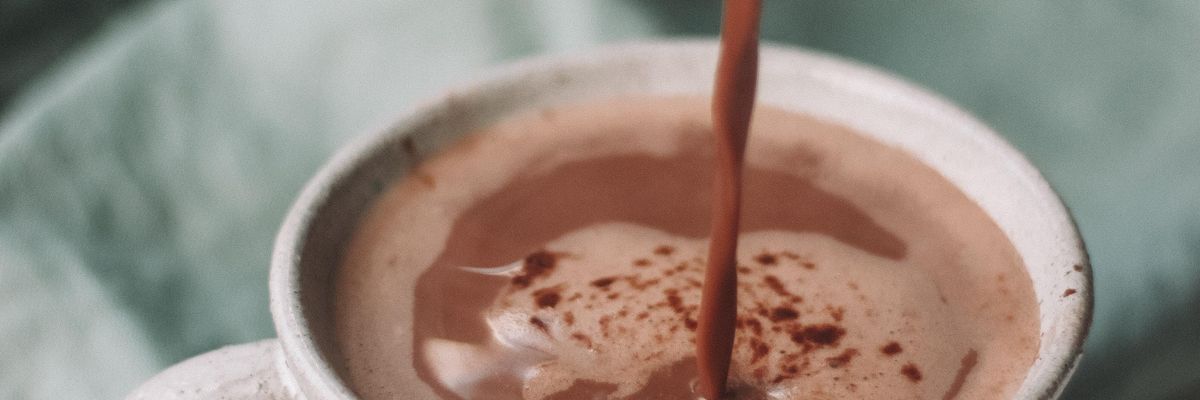These Vengeful Wishes by Vanessa Montalban

Vanessa Montalban
Cuban American Vanessa Montalban is proof that the path to becoming an author isn’t always a straight line. She dropped out of high school in 11th grade, got her GED, and worked in insurance and real estate before chasing her dream of writing. At 30, she enrolled in UCF’s creative writing program, and in 2024, she made her Young Adult (YA) debut with “A Tall Dark Trouble,” a witchy tale inspired by her Cuban heritage. Now, she’s back with “These Vengeful Wishes,” a standalone fantasy full of folklore, vengeance, and a very haunted wishing well.
When Ceci’s stepfather is arrested, she and her mom move back to Santa Aguas, a town famous for the legend of La Cegua—a spirit that punishes untrustworthy men. Their new home? An abandoned manor tied to the very curse Ceci’s mother has tried to forget. Then, Ceci starts painting a mysterious door in the forest that doesn’t exist… until it does. Behind the door, there’s a well that grants wishes, but at a terrifying cost. As Ceci’s wishes spiral out of control, she must face the truth: La Cegua never forgets a debt. This is a great entry into the YA fantasy genre and it brings a dark fairy tale with themes like generational curses and the cost of power.
This is the Year by Gloria Muñoz

Gloria Muñoz
Colombian American Gloria Muñoz is a poet, translator, and advocate for multilingual literacy whose work has been recognized by the Academy of American Poets. She’s best known for her poetry collections “Your Biome Has Found You” and “Danzirly,” but now she’s stepping into fiction with “This is the Year,” a coming-of-age story that blends prose and poetry to tackle themes like grief, climate change, and the immigrant experience.
The world is burning, and Julieta Villarreal has one chance to leave it behind. At 17, Julieta has already lost her twin sister in a hit-and-run, and her Florida home is drowning in climate disasters. Then she’s recruited by Cometa, a private space program that wants young pioneers to establish the first extraterrestrial settlement. It’s a once-in-a-lifetime chance, but leaving Earth means leaving her family, her grief, and her past. This one is for fans of sci-fi, lyrical writing, and stories about resilience.
Along Came Amor by Alexis Daria

Puerto Rican Alexis Daria is the queen of Latinx romance. Her debut, “You Had Me at Hola,” was a major hit, landing on best-of lists from Oprah Magazine to Entertainment Weekly. She’s known for writing steamy, heartfelt stories featuring ambitious Latina heroines, and her latest novel, “Along Came Amor,” brings all the drama, spice, and family chaos you could want.
After her ex-husband dumps her to “follow his dreams,” Ava Rodriguez swears off serious relationships. But she wouldn’t say no to a no-strings one-night stand with a gorgeous hotelier. The thing is that, when she walks into her cousin’s engagement party, her one-night fling, Roman Vasquez, is standing right there as the best man to the groom. Now they’re forced to see each other all the time, and Roman isn’t content being Ava’s dirty little secret. He wants more. But with her family breathing down her neck, Ava has to decide: Is love worth the risk? This book gives telenovela-level juicy drama and a sizzling romance about second chances that we think anyone can get behind.
Black Mestiza by Yael Valencia Aldana

Yael Valencia Aldana
Caribbean Afro-Latine Yael Valencia Aldana is a poet, professor, and storyteller. Her work explores identity, ancestry, and the resilience of Black and Indigenous Latinas, making it essential in this day and age. Born in Trinidad and Tobago, Valencia Aldana was raised in Barbados before moving to Brooklyn, and her poetry reflects the richness of her Caribbean and Latine heritage.
“Black Mestiza” is her most personal poetry collection yet and it’s a love letter to the Black and Indigenous women who shaped her. These poems unpack identity, colonialism, and the beauty of mixed-race experiences, and it will stay with you long after you finish reading.
(S)Kin by Ibi Zoboi

Ibi Zoboi
Haitian Ibi Zoboi immigrated to the U.S. at age four and has written multiple award-winning books, including “American Street” (a National Book Award finalist) and “Pride” (a Caribbean remix of Jane Austen’s “Pride & Prejudice”). But now, she’s taking readers into unexplored, spellbinding territory with her contemporary fantasy debut, “(S)Kin.”
In Brooklyn, fireball witches don’t last long. Marisol is the daughter of a soucouyant—a Caribbean fireball witch who sheds her skin and drinks life to survive. She thought she could leave her past behind, but Brooklyn is suffocating her magic. Meanwhile, Genevieve, a girl with a hunger she doesn’t understand, finds herself drawn to a family secret that ties her to Marisol. As their lives intertwine, Marisol and Genevieve must face the power hiding under their skin and the sacrifices they must make to survive. This book is packed with Caribbean folklore and themes of inheritance and power.
My Name is Emilia Del Valle by Isabel Allende

Isabel Allende
Chilean American Isabel Allende is a literary icon known for combining magical realism and history into unforgettable stories like “The House of the Spirits” and “City of the Beasts.” She’s won countless awards, including Chile’s National Literature Prize and the Presidential Medal of Freedom. Her upcoming novel, “My Name is Emilia Del Valle,” brings readers back to 19th-century San Francisco, where a young woman is fighting for love, truth, and the power of her own voice.
Emilia del Valle has always wanted to be a writer, but in 1866, the world isn’t kind to women with ambition. Raised by a loving stepfather after being abandoned as a baby, Emilia finds her calling in journalism only to get caught up in a dangerous war, a forbidden love, and a family secret that threatens everything she knows. “My Name is Emilia Del Valle” will be published on May 6, 2025, so keep an eye out for it if you enjoy historical fiction with a strong Latina character, intrigue, and romance.
So Many Stars by Caro De Robertis

Caro de Robertis
Caro De Robertis is a groundbreaking Uruguayan American writer whose work has earned a Stonewall Book Award, a Lambda Literary Award, and a National Endowment for the Arts Fellowship. Their latest, “So Many Stars,” is a first-of-its-kind oral history of trans, nonbinary, genderqueer, and Two-Spirit people of color.
Through powerful firsthand accounts, this book tells real stories of courage, survival, and cultural transformation. From activists and artists to everyday people who fought to exist freely, “So Many Stars” offers valuable perspectives and is a must-read for anyone interested in queer history and resistance. It will be released on May 13, 2025, so mark your calendar.
Get Real, Chloe Torres by Crystal Maldonado

Crystal Maldonado
Puerto Rican Crystal Maldonado is known for writing romcoms featuring fat, brown girls living their best (and messiest) lives. Her debut, “Fat Chance, Charlie Vega,” won the New England Book Award and was named Kirkus Best YA Fiction of 2021. Now, she’s giving readers a road trip, a sapphic love triangle, and best-friend chaos with “Get Real, Chloe Torres.”
What do you do when your ex-besties refuse to speak to you? Well, according to Chloe Torres, you plan a road trip. Chloe just turned 18 and is ready for one last adventure before college. Moreover, she’s on a mission to reunite her estranged BFFs by taking them to their favorite boy band’s reunion concert. The only problem is that Sienna is giving her the cold shoulder and Ramona kissed her and then ghosted her. This book has one car, two ex-best friends, and a whole lot of drama. It’s perfect for readers who love chaotic friendships, sapphic yearning, and pop culture. “Get Real, Chloe Torres” will be out on May 13, 2025.
My Train Leaves at Three by Natalie Guerrero

Natalie Guerrero
Puerto Rican-Dominican Natalie Guerrero is based in Los Angeles and her work has appeared in Electric Literature, Byline, Goop, and Blavity. She’s also co-authored books like “Walking in My Joy” by actress Jenifer Lewis. “My Train Leaves at Three” is her highly anticipated debut novel coming out on July 8, 2025, and it promises to be a raw, emotional story about grief, ambition, and the dark side of fame.
How do you rebuild a life that no longer feels like your own? Xiomara, an Afro-Latina singer and actress, has always had big dreams. But after the sudden death of her sister, she’s left working minimum-wage jobs and living with her ultra-Catholic Puerto Rican mother in a cramped apartment. When a once-in-a-lifetime audition comes her way, Xiomara finally sees a future for herself. But the industry is ruthless, and she soon finds herself face-to-face with the ugly truths behind Hollywood’s glitz and glamour. If you love drama, stories about fighting for your dreams, and messy protagonists, this will be up your alley.
The Possession of Alba Díaz by Isabel Cañas

Isabel Cañas
Mexican American Isabel Cañas is one of the most exciting voices in Latino horror. Her gothic debut, “The Hacienda,” was compared to works like “Mexican Gothic” by Silvia Moreno-Garcia and “Rebecca” by Daphne du Maurier. In 2025, she’s back with “The Possession of Alba Díaz,” a terrifying historical horror novel set in 1765 Zacatecas that will be published on August 19, 2025.
Alba Díaz should be safe. She fled her home with her wealthy fiancé, seeking refuge in his family's mine. But soon after her arrival, she starts getting plagued by hallucinations, sleepwalking, and violent convulsions. Something inside her is growing stronger… and it’s hungry. “The Possession of Alba Díaz” is a gothic horror story that brings exorcism and dark family secrets, so be ready for some chills.
From Your Site Articles
Related Articles Around the Web

 spicy fire breathing GIFGiphy
spicy fire breathing GIFGiphy















